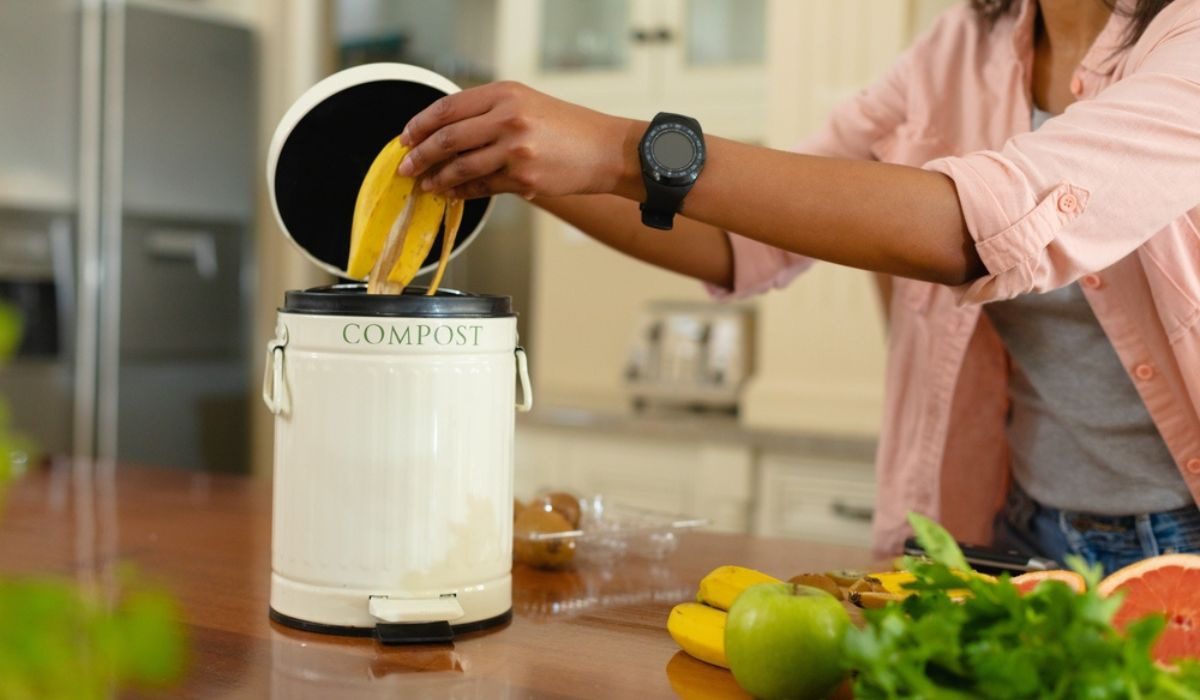Individuals who wish to live green should turn to home composting. These bins help transform food and yard waste into nutrient-rich compost, contributing to a circular food waste reduction and recycling concept. Home composting utilises the normal biological process where microorganisms decompose organic waste.
Composting diverts organic waste from landfills to prevent the release of methane, a harmful greenhouse gas. This has a beneficial environmental impact as it helps improve soil fertility, less synthetic fertilizers and pesticides, promotes water conservation, and supports biodiversity. Home composter bins are tools through which people can engage in a greener future by decreasing waste, improving soil quality, and practicing sustainable living.
See also: All about composting
Home composter bin: How to choose the right one?
It means that when buying a composter, one must pick a size according to the household waste. Consider compact or indoor composters if there needs to be more space. Tumbler composters, whose design facilitates rotating, speed up composting for those ready to work.
Stationary compost bins are affordable and straightforward for a low-maintenance option. Plastic is a good option if you are looking for a durable and light material – it must be recycled. Insulated composters made of wood should last quite a while; however, it is worth looking for treated wood or DIY solutions. Hardly any metal bins are used because they heat up fast, assisting in decomposition. Check for ventilation for proper aeration, as well as convenient access points.
Ensure you incorporate the composter in a way that does not disrupt the aesthetics of your garden. Ensure there are some tight-fitting lids for odor control and climate issues, especially if it is insulated for thermal regulation for extreme weather.
Materials for effective composting
Green materials (Nitrogen-rich)
Yard waste (fresh grass clippings, young weeds, etc.).
Manure from herbivorous livestock (cows or chickens).
Brown materials (Carbon-rich)
Dry leaves, Straw, or hay.
Shredded newspaper or cardboard, Woody pruning.
Water
Composting is vital to keeping the proper moisture level. Water it as necessary to maintain moisture like that of a wrung-out sponge.
Air
Regular turning of the compost adds air into the pile for better breakdown. Compost bins are designed for turning, while some require a pitchfork or shovel.
Composting bin
Select a suitable composting bin depending on your household needs and space. This can be tumblers, stationary bins, open piles, or indoor composters.
Where to make a Home compost bin?
It is essential to be accessible and keep it close to the kitchen for easy disposal. A little sun helps in rapid decomposition, and good ventilation will prevent the odor, so avoid closed spaces.
Have a water source close by to help with moisture control while the site is drying, but ensure proper drainage.
Consider your space – small for small yards or more significant for spacious areas. Extreme conditions – know and comply with local regulations and aesthetic considerations. Finally, be pest-conscious and select a place to repel undesired guests.
Successful composting tips
Use your bin for kitchen scraps
-Keep a tiny bin at home for your daily kitchen scrap collection.
-Collect fruit and vegetable peels, coffee grounds, eggshells, and other non-greasy food scraps.
-Avoid smelly odors and pests by excluding meat, dairy, pet waste, and oily foods.
-Ensure you frequently empty the kitchen container into the compost bin to attain balance.
Layering techniques for effective composting
-Alternate layers of green and brown for a balanced compost bin.
-Include kitchen scraps, fresh yard waste, and livestock manure as nitrogen sources.
-Consider dry leaves, straw, shredded newspaper, or woody pruning as carbon sources.
-Water whenever necessary; ensure that the compost pile remains damp, unlike a wet sponge.
-Keep turning the compost to allow air to be introduced, which helps speed up decomposition.
Common composting issues
-Check aeration and moisture levels; add brown materials for pile balance.
-Change the green-to-brown ratio; provide adequate aeration and consider smaller particles.
-Do not introduce meat, dairy, or oily; cover kitchen waste with brown material.
-Incorporate more wet brown materials to absorb excess moisture and turn the compost to improve aeration.
-Look for anaerobic conditions and turn the compost. Bring in the brown materials.
-Reduction in size and layering or shredding of large items.
Science behind composting
Microorganisms and decomposition
Many microorganisms, such as bacteria, fungi, and actinomycetes, participate in the composting process, which decomposes organic components and develops a humus rich in nutrients.
Temperature and moisture: Key factors for success
Temperature and moisture control should be optimal for promoting microbial activity and successful composting.
Composting initiatives
Sustainability and community are also built on community composting. One can reduce overall environmental impact by participating in local composting programs.
Sharing compost with neighbors and community gardens enhances cooperation in reducing waste, hence better soil for all and eco-friendly practices.
FAQs
What is the best location for a home compost bin?
Put it near the kitchen, easy to reach, with sunlight, air, and suitable drainage.
How long does it take to mature compost?
Compost times vary, but usually, it takes a few weeks to several months, depending on factors like size, inputs, and maintenance.
In case my compost bin smells terrible?
Check the proportions of green and brown materials, aerate the compost, and add more brown materials to soak up extra water.
Is it possible to compost in winter or in colder climates?
Composting can also be done in winter. Use insulated composters and control moisture levels to avoid the freezing stage.
What are the advantages of compost tea?
Compost tea is a liquid fertilizer made by steeping compost in water. The plants get extra nutrients, and their development is healthy.
Can you create a home compost in small spaces like an apartment?
They make compact and indoor compost available for people living in small apartments.
What materials should not be composted?
Do not compost meat, dairy, pet wastes, and fatty foods; they create odors and attract pests.
| Got any questions or point of view on our article? We would love to hear from you. Write to our Editor-in-Chief Jhumur Ghosh at jhumur.ghosh1@housing.com |






